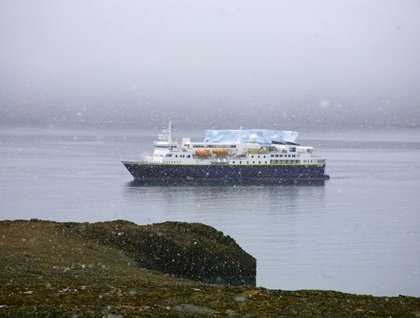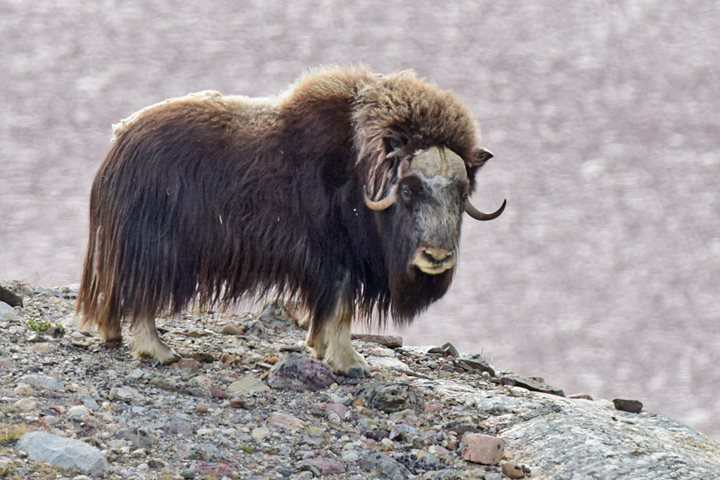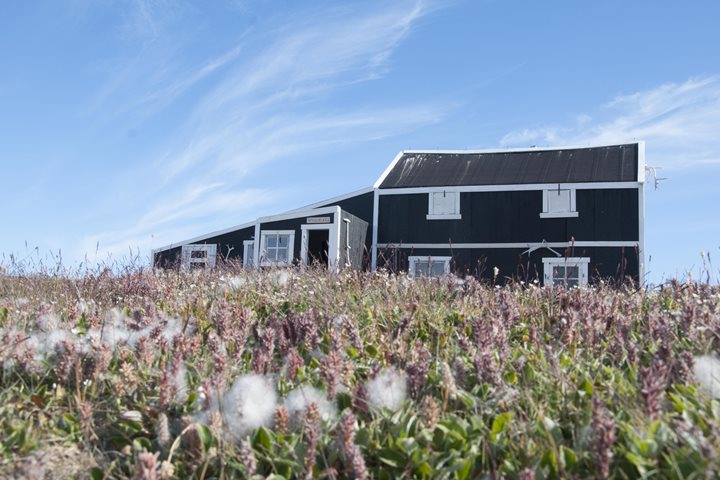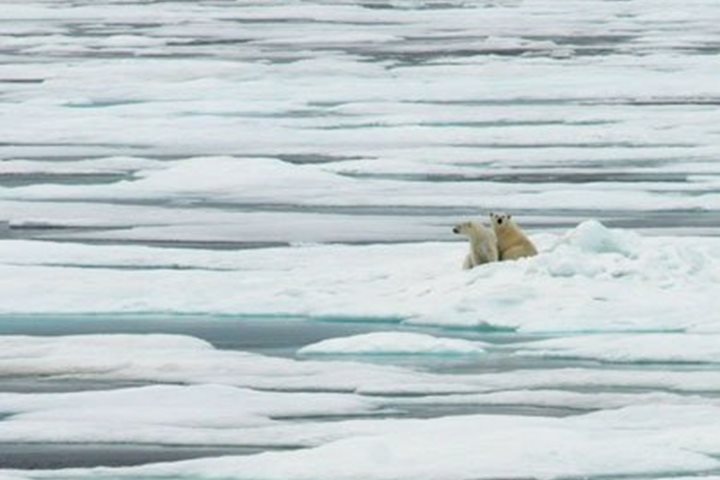Early this morning the slate grey coloured sea was sliced by the dorsal fins of a small group of orcas. The bridge hummed with the excited, shared comments of guests and staff as we watched them moving through the water searching for food, at close quarters to the National Geographic Explorer. Breakfast was followed by a couple of presentations in the lounge as we progressed towards our planned afternoon landfall at Dundas Harbour located at the southeastern corner of Devon Island. Just before lunch it began to snow as we dropped anchor in a shallow, sheltered bay to the north.
Our afternoon was spent exploring this remarkable multifaceted place. The area was once home to Thule hunter-gatherers. On a promontory to the west of our landing point we examined a number of stone and sod built winter houses constructed around 1200 A.D. Now abandoned grassy ruins, they once were the focal point of a closely knit community. Erosion by wave and wind has exposed a thick layer of organic soil along the water’s edge. This is rich in animal bone and preliminary examination of these remains has indicated that the Thule hunted a range of marine mammals including bow headed whale, walrus, and seal in addition to caribou, arctic fox, and polar bear. Interestingly they incorporated the bones from the whales into the fabric of their houses. They had a very close connection to the sea. Close by are a number of stone built graves which once contained the interred remains of these people.
In 1924 a Royal Canadian Mounted Police detachment was established at Dundas Harbour. Three constables were stationed here and the remains of their outpost remain as mute sentinels to their erstwhile presence, keeping watch over the entrance into the famous Lancaster Sound—the gateway to the much sought after Northwest Passage. The various timber framed buildings still contain the remains of furniture, stoves, domestic utensils and numerous rusting food tins. The post was finally abandoned in 1951. An eerie silence is only punctuated by the wash of waves on the nearby sandy beach. Human absence permeates this place—an impression accentuated by the small graveyard, which contains the remains of two constables who were stationed here, on a rise to the back of the main buildings.
Throughout our visit to Dundas Harbour we were struck by the variety of plants which thickly carpet the uneven ground. Saxifrages, arctic poppies, willow, mosses, and lichens have found their respective niches and abound. A flock of eider duck flying in a V-formation skimmed just above the surface of the bay heading out toward the promontory where the Thule ruins are situated. The surrounding tall ridges of ancient sedimentary rocks were now peppered with snow, adding texture to their stark outlines. A large blue iceberg had drifted in to the bay. The silence was palpable; the grandeur of the vista, striking.







